I want to create a similar background with a shader to these images:
 :
:
These are just blurred blobs with colors, distributed across the whole page:

Here's my current progress: https://codesandbox.io/s/lucid-bas-wvlzl9?file=/src/components/Background/Background.tsx
Vertex shader:
varying vec2 vUv;
void main() {
vUv = uv;
gl_Position = projectionMatrix * modelViewMatrix * vec4(position, 1.0);
}
Fragment shader:
precision highp float;
uniform float uTime;
uniform float uAmplitude;
uniform float uFrequency;
varying vec2 vUv;
uniform vec2 uResolution;
vec4 Sphere(vec2 position, float radius)
{
// float dist = radius / distance(vUv, position);
// float strength = 0.01 / distance(vUv, position);
float strength = 0.1 / distance(vec2(vUv.x, (vUv.y - 0.5) * 8. + 0.5), vec2(0.));
return vec4(strength * strength);
}
void main()
{
vec2 uv = vUv;
vec4 pixel = vec4(0.0, 0.0, 0.0, 0.0);
vec2 positions[4];
positions[0] = vec2(.5, .5);
// positions[1] = vec2(sin(uTime * 3.0) * 0.5, (cos(uTime * 1.3) * 0.6) + vUv.y);
// positions[2] = vec2(sin(uTime * 2.1) * 0.1, (cos(uTime * 1.9) * 0.8) + vUv.y);
// positions[3] = vec2(sin(uTime * 1.1) * 1.1, (cos(uTime * 2.6) * 0.7) + vUv.y);
for (int i = 0; i < 2; i++)
pixel += Sphere(positions[i], 0.22);
pixel = pixel * pixel;
gl_FragColor = pixel;
}